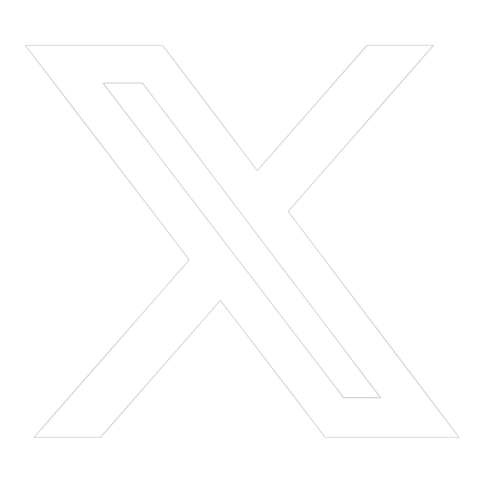Introduction
In the evolving world of Web3 development, Layer-0 solutions like Polkadot have brought forward notable innovations, especially in blockchain interoperability. However, as more developers turn to decentralized solutions, Polkadot’s challenges have surfaced, creating barriers for smaller and budget-conscious projects. Enter Vitreus, the developer-friendly Layer-0 chain built to streamline development without the steep costs or complex architecture. Let’s explore why Vitreus outshines Polkadot for Web3 developers looking to launch scalable, cost-effective projects.
1) Developer-Friendly Architecture: Simplifying Complexity
One of Polkadot's biggest challenges is the complexity of its parachain-based architecture. Building on Polkadot requires advanced knowledge of Substrate, a steep learning curve that can overwhelm developers, particularly newcomers. Vitreus changes the game by offering a modular, straightforward development environment. There’s no need for complex multi-chain setups—developers can focus on building dApps, not on mastering convoluted frameworks. This ease of use allows developers to deploy faster and bring innovative ideas to market without the hassle.
2) Open Access Without Parachain Auctions: Lowering the Entry Barrier
Polkadot’s reliance on parachain slot auctions adds another obstacle. These slots are limited and require costly bidding, making it tough for smaller projects to access the network. Vitreus eliminates this barrier, allowing equal access to network resources for all developers. With no slot auctions and lower setup costs, early-stage developers can affordably build on Vitreus, a vital advantage for those who want to avoid high entry costs.
3) High-Throughput Performance for Seamless Scaling
While Polkadot has parallel parachains to aid scalability, its relay chain still faces throughput limitations, especially under network load. Vitreus, designed for high throughput at the core, ensures dApps can handle substantial transaction volumes without lag. Developers can confidently scale as their user base grows, knowing Vitreus can handle high traffic while maintaining smooth performance and low latency.
4) Streamlined Governance for Agile Updates
Polkadot’s on-chain governance is highly democratic, but it can also be slow and cumbersome. Decision-making gridlocks mean that network updates sometimes face delays, impacting developers relying on timely improvements. Vitreus combines decentralization with a balanced governance model, allowing community input without stalling updates. This agile governance approach keeps the platform adaptive to developer needs and ensures continuous improvement without red tape.
5) Robust Security Model with Isolated Risks
Polkadot’s shared security structure means vulnerabilities in one parachain can ripple across the entire network. Vitreus offers a more isolated security model—each subnet operates independently, ensuring that an issue in one area doesn’t compromise others. This security design appeals to developers working on high-stakes applications, where the ability to contain risk within one subnet offers peace of mind.
Conclusion: A Developer-Centric Approach
For Web3 developers seeking a straightforward, accessible, and secure Layer-0 platform, Vitreus stands out. By removing complex parachain requirements, offering open access without costly slot auctions, and providing a reliable, high-throughput infrastructure, Vitreus aligns perfectly with the needs of developers looking to bring innovative ideas to life without the typical roadblocks. Make the shift to Vitreus and build your next big project on a platform that’s designed with you in mind.
The journey doesn’t stop here! Join the conversation and stay ahead in the Web3 revolution by following us on X and connecting with our vibrant community on Discord. Let’s build the future together—one block at a time. Learn more at Vitreus.io!
In the evolving world of Web3 development, Layer-0 solutions like Polkadot have brought forward notable innovations, especially in blockchain interoperability. However, as more developers turn to decentralized solutions, Polkadot’s challenges have surfaced, creating barriers for smaller and budget-conscious projects. Enter Vitreus, the developer-friendly Layer-0 chain built to streamline development without the steep costs or complex architecture. Let’s explore why Vitreus outshines Polkadot for Web3 developers looking to launch scalable, cost-effective projects.
1) Developer-Friendly Architecture: Simplifying Complexity
One of Polkadot's biggest challenges is the complexity of its parachain-based architecture. Building on Polkadot requires advanced knowledge of Substrate, a steep learning curve that can overwhelm developers, particularly newcomers. Vitreus changes the game by offering a modular, straightforward development environment. There’s no need for complex multi-chain setups—developers can focus on building dApps, not on mastering convoluted frameworks. This ease of use allows developers to deploy faster and bring innovative ideas to market without the hassle.
2) Open Access Without Parachain Auctions: Lowering the Entry Barrier
Polkadot’s reliance on parachain slot auctions adds another obstacle. These slots are limited and require costly bidding, making it tough for smaller projects to access the network. Vitreus eliminates this barrier, allowing equal access to network resources for all developers. With no slot auctions and lower setup costs, early-stage developers can affordably build on Vitreus, a vital advantage for those who want to avoid high entry costs.
3) High-Throughput Performance for Seamless Scaling
While Polkadot has parallel parachains to aid scalability, its relay chain still faces throughput limitations, especially under network load. Vitreus, designed for high throughput at the core, ensures dApps can handle substantial transaction volumes without lag. Developers can confidently scale as their user base grows, knowing Vitreus can handle high traffic while maintaining smooth performance and low latency.
4) Streamlined Governance for Agile Updates
Polkadot’s on-chain governance is highly democratic, but it can also be slow and cumbersome. Decision-making gridlocks mean that network updates sometimes face delays, impacting developers relying on timely improvements. Vitreus combines decentralization with a balanced governance model, allowing community input without stalling updates. This agile governance approach keeps the platform adaptive to developer needs and ensures continuous improvement without red tape.
5) Robust Security Model with Isolated Risks
Polkadot’s shared security structure means vulnerabilities in one parachain can ripple across the entire network. Vitreus offers a more isolated security model—each subnet operates independently, ensuring that an issue in one area doesn’t compromise others. This security design appeals to developers working on high-stakes applications, where the ability to contain risk within one subnet offers peace of mind.
Conclusion: A Developer-Centric Approach
For Web3 developers seeking a straightforward, accessible, and secure Layer-0 platform, Vitreus stands out. By removing complex parachain requirements, offering open access without costly slot auctions, and providing a reliable, high-throughput infrastructure, Vitreus aligns perfectly with the needs of developers looking to bring innovative ideas to life without the typical roadblocks. Make the shift to Vitreus and build your next big project on a platform that’s designed with you in mind.
The journey doesn’t stop here! Join the conversation and stay ahead in the Web3 revolution by following us on X and connecting with our vibrant community on Discord. Let’s build the future together—one block at a time. Learn more at Vitreus.io!









